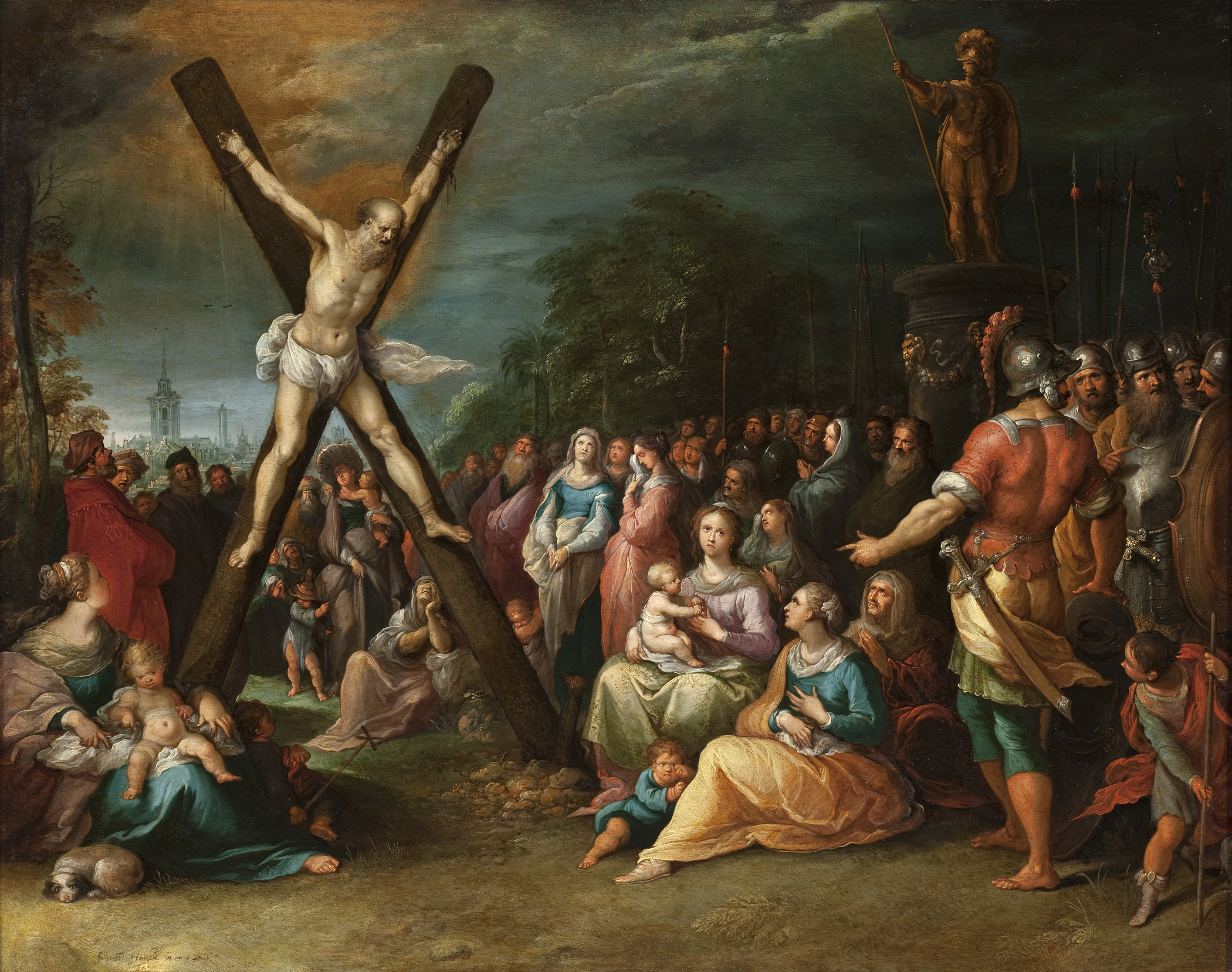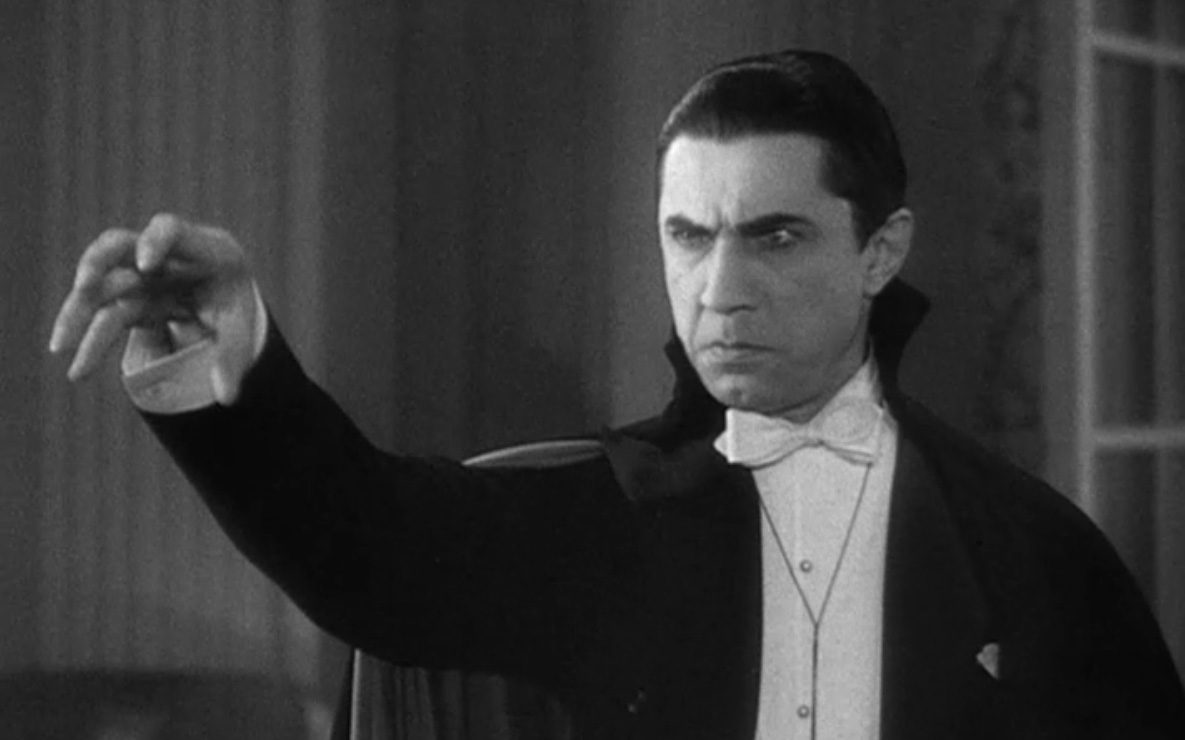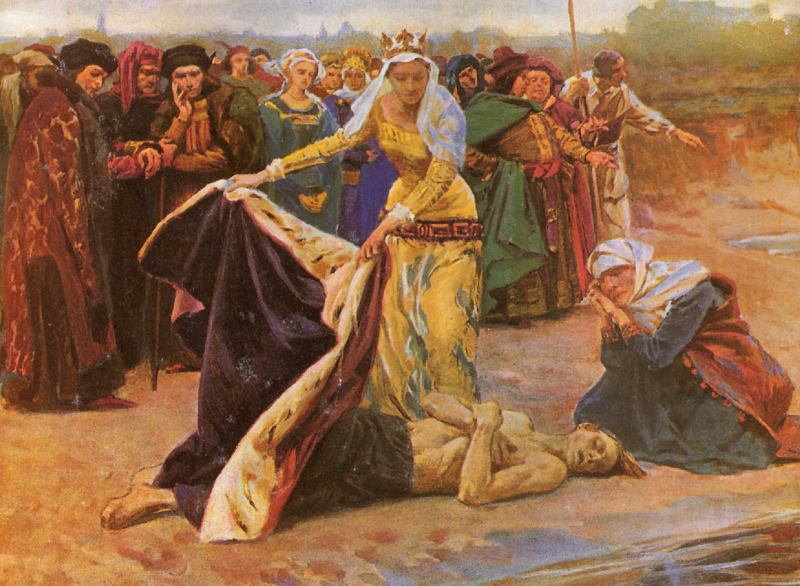
Fran Francken II (Flanders, Antwerp, 1581-1642) painting of St. Andrew’s crucifixion, circa 1620, on exhibit in the Los Angeles County Museum of Art.
St. Andrew, the first man to join Christ as an apostle, was crucified on an X-shaped cross. He is now widely venerated as the patron of Scotland, Russia, and many other places. His X-shaped cross appears on the flags of many countries that looked to him for protection. His feast–on November 29 in some places and November 30 in other places–is both especially popular for magic that reveals a young woman’s future husband and was believed to be the start of the most popular time for vampires to come hunt the living, which would last until Saint George’s Eve (22 April).
In Romania, it is customary for young women to put 41 grains of wheat beneath their pillow before they go to sleep, and if they dream that someone is coming to steal their grains that means that they are going to get married next year. Also in some other parts of the country the young women light a candle from the Easter celebration and bring it, at midnight, to a fountain. They ask Saint Andrew to let them glimpse their future husband. Saint Andrew is invoked to ward off wolves, who are thought to be able to eat any animal they want on this night, and to speak to humans. A human hearing a wolf speak to him will die.
In Póvoa de Varzim, an ancient fishing town in Portugal there is Cape Santo André (Portuguese for “Saint Andrew”) and near the cape there are small pits in the rocks that the people believe these are footprints of Saint Andrew. Saint Andrew Chapel there was built in the Middle Ages and is the burial site of drowned fishermen found at the cape. (St. Andrew was also a fisherman in the New Testament.) Fishermen also asked St. Andrew for help while fishing.
It was common to see groups of fishermen, holding candles in their hands, making a pilgrimage to the Cape’s chapel on Saint Andrew’s Eve. Many might still believe that any Portuguese fisherman who does not visit Santo André in life will have to make the pilgrimage after they die.


